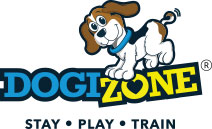Ease End Of Summer Blues For Your Dog
Summer is drawing to a close, which can bring changes to the rhythm of your household. While you might be excited to get back to your school routine, and to put an end to leisurely mornings on the patio, these changes in routine can be confusing and even anxiety-inducing for your dog. Your dog might have become accustomed to having people around the house at all hours of the day. But once the kids are back in school and dogs spend more hours at home alone, the resulting separation anxiety can mean destructive behaviors and incessant barking.
Here are a few suggestions to help smooth the change of seasons. Reduce the chances of coming home to destroyed cushions and annoyed neighbors by starting the transition gradually. A few weeks before school begins, s tart leaving your dog alone for brief periods throughout the day. Day by day, gradually lengthen the periods when your dog is alone. Begin adding sounds and activities to the routine, such as getting out lunch boxes.
Give your dog some exercise and then the biggest meal of the day before leaving the house. Most dogs are perfectly happy to take a long nap after eating. Or try providing a food puzzle, such as a Kong, when you leave the house. That peanut butter might be so tantalizing that she won’t even notice you’re gone!
You’re not doing your dog any favors by coddling him or her. You might think you’re being nice by saying goodbye to your dog in soothing a voice when you’re headed out the door, but it is nothing but confusing to the dog. It’s much more reassuring if you speak in a firm voice, and even ignore your dog for the last few minutes before you leave the house. In fact, ignoring your dog reduces the stress of being the center of attention and then suddenly being alone.
Likewise, ease yourself back into the household when you return. Don’t thrust yourself into the dog’s space immediately, but rather pay little attention to the dog for the first fifteen minutes. That will keep the situation from becoming overly exciting.
Train the people, not just the dog. The entire family should follow the same practices regarding the dog, particularly around leaving and returning to the house. If your dog perceives a routine, he or she will have a quicker grasp of what is acceptable and unacceptable behavior.
Remember to schedule appropriate time for your dog. Just because you are back in the classroom, or your office is back at full-speed doesn’t mean you can shirk your responsibilities. Just because you have soccer practice doesn’t mean your dog doesn’t need and deserve the long walk he or she is used to. Some good exercise every day, with some extra attention on weekends, should help maintain happy dogs and happy families.
